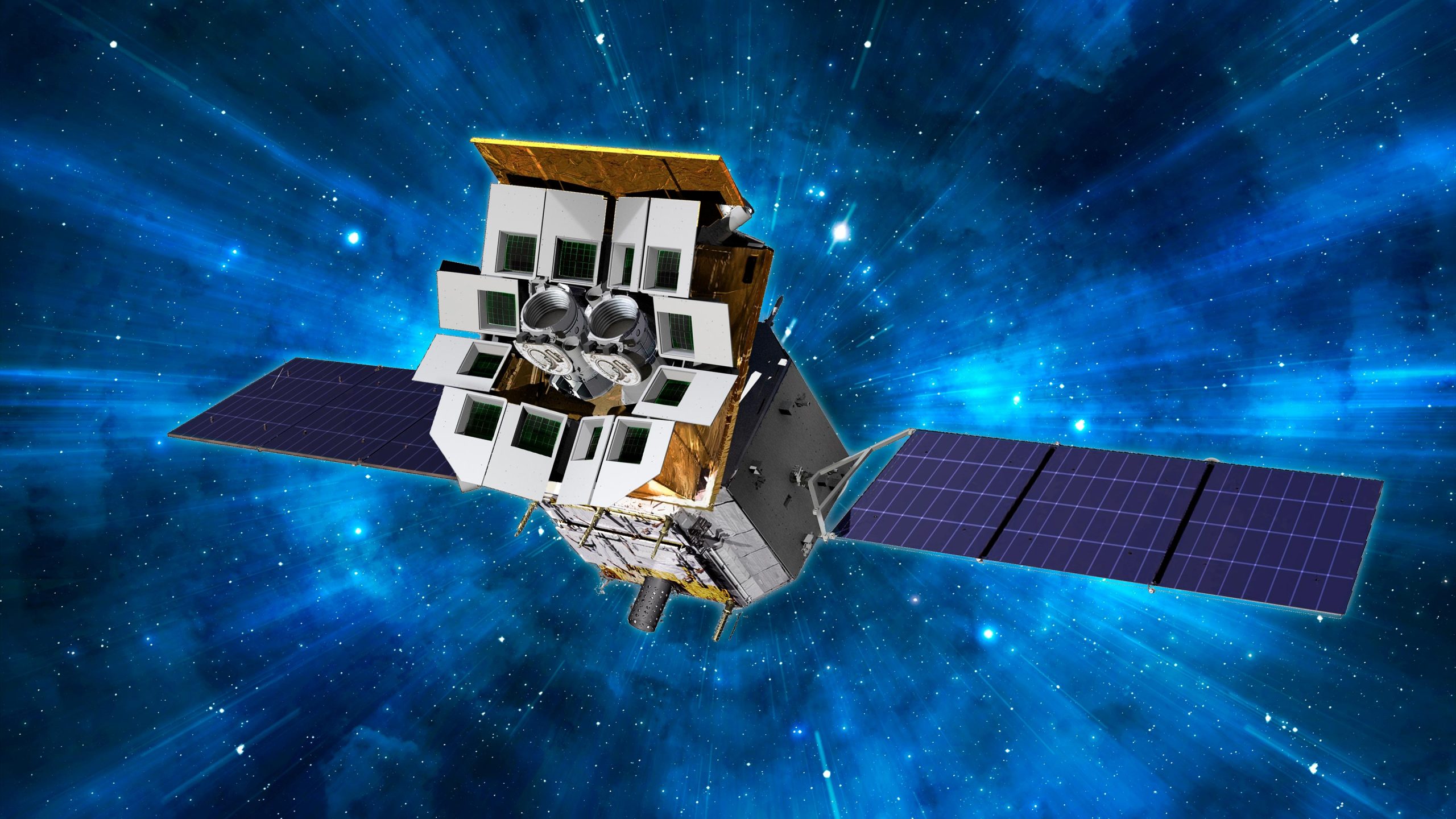
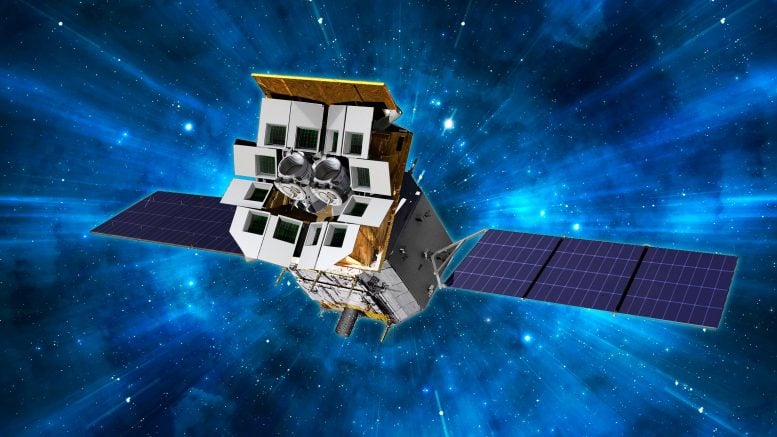
The Einstein Probe, launched in early 2024, has begun its mission with promising first-light images showcasing its advanced X-ray telescopes, designed to explore the dynamic universe in collaboration with international partners. Credit: Chinese Academy of Sciences
The Einstein Probe successfully demonstrates X-ray surveillance capabilities through its innovative lobster-eye optics.
The first images captured by the innovative mission were presented at the 7th workshop of the Einstein Probe consortium in Beijing. They illustrate the satellite’s full potential and show that its novel optics, which mimic a lobster’s eyes, are ready to monitor the X-ray sky. The space X-ray telescope zoomed in on a few well-known celestial objects to give us a hint of what the mission is capable of.
Launched on January 9, 2024, the Chinese Academy of Sciences (CAS) spacecraft Einstein Probe joins ESA’s XMM-Newton and JAXA’s XRISM in their quest to discover the Universe in X-ray light. The mission is a collaboration led by CAS with ESA, the Max Planck Institute for Extraterrestrial Physics (MPE) (Germany), and the National Centre for Space Studies (CNES) (France).
In the months since liftoff, the mission operations team has been performing the necessary tests to confirm the spacecraft’s functionality and calibrating the scientific instruments. During this crucial phase, Einstein Probe captured scientific data from various X-ray sources.
These first-light images demonstrate the outstanding capabilities of Einstein Probe’s two scientific instruments. The Wide-field X-ray Telescope (WXT) can observe a panorama of nearly one-eleventh of the celestial sphere in one shot, while the more sensitive Follow-up X-ray Telescope (FXT) offers close-ups and can pinpoint short-lived events caught by WXT.
“I am delighted to see the first observations from Einstein Probe, which showcase the mission’s ability to study wide expanses of the X-ray sky and quickly discover new celestial sources,” says Prof. Carole Mundell, ESA Director of Science. “These early data give us a tantalizing glimpse of the high-energy dynamic Universe that will soon be within reach of our science communities. Congratulations to the science and engineering teams at CAS, MPE, CNES, and ESA for their hard work in reaching this important milestone.”
The capability of the mission to promptly spot new X-ray sources and monitor how they change over time is fundamental to improving our grasp of the most energetic processes in the cosmos. Powerful X-rays are blasted through the Universe when neutron stars collide, supernovas explode, and matter is swallowed by black holes or ejected from the crushing magnetic fields that envelop them.
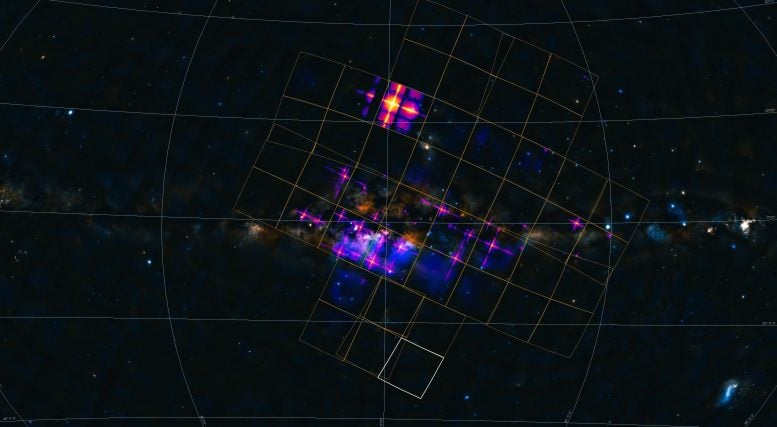
This panoramic view of our Milky Way in X-ray light was taken as part of the calibration and test campaign of Einstein Probe in space. During this test observation lasting more than 11 hours, the satellite detected various celestial objects that generate X-rays. Each object is captured as a purple cross due to the way the spacecraft’s novel lobster-eye optics work. The X-ray observations are shown on top of an optical image of the Milky Way created by European Southern Observatory ground-based telescopes.
Einstein Probe’s Wide-field X-ray Telescope (WXT) consists of twelve modules that cover more than 3600 square degrees of the sky. The satellite can capture the full night sky in three orbits around Earth. While monitoring the sky, the mission will spot X-rays from powerful events like supernovas, material falling into black holes or even colliding neutron stars. The Follow-up X-ray Telescope (FXT) can subsequently zoom in on these objects and provide more detailed information.
Credit: EPSC, NAO/CAS; DSS; ESO
Lobster Eyes Monitoring the Universe
Einstein Probe’s WXT instrument consists of twelve modules featuring the novel lobster-eye technology that was tested in flight in 2022 by the technology demonstrator LEIA (Lobster Eye Imager for Astronomy). The twelve modules provide a field of view of more than 3600 square degrees, allowing Einstein Probe to monitor the whole night sky in just three orbits.
During its first months in space, WXT started its work of keeping a watchful eye on the X-ray sky. Detections of energetic objects look like a lit-up plus sign due to the way the instrument’s novel lobster-eye optics work. The first X-ray transient source – an astronomical object that is not continuously shining but pops up and fades again – was discovered on 19 February. This candidate gamma-ray burst lasted for 100 seconds. Einstein Probe discovered another 14 temporary X-ray sources and also captured X-rays 127 flaring stars.
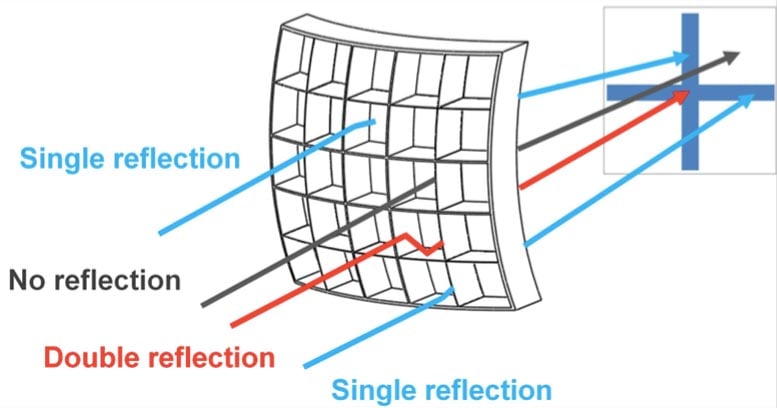
This image illustrates the measuring mechanism of the Wide-field X-ray Telescope of Einstein Probe. X-rays coming from the Universe enter the telescope and are passed down square tubes towards a CMOS light detector where they create a ‘plus’ shaped image.
Some X-rays don’t interact with the walls of the square tubes and can end up anywhere on the detector. However, most X-rays will be reflected on the walls. X-rays that only are reflected by a top or bottom wall will cause a horizontal bar on the detector. Similarly, X-rays that only reflect off a left or right wall will cause the vertical bar. Then finally there are X-rays that reflect of both walls, these double reflected rays end up in the middle of the image causing an intense signal.
Credit: Chinese Academy of Sciences
During the mission, the wide-field instrument’s findings will guide a range of ground- and space-based telescopes to perform follow-up observations in multiple wavelength bands. X-ray follow-up observations can also be obtained using the satellite’s FXT instrument.
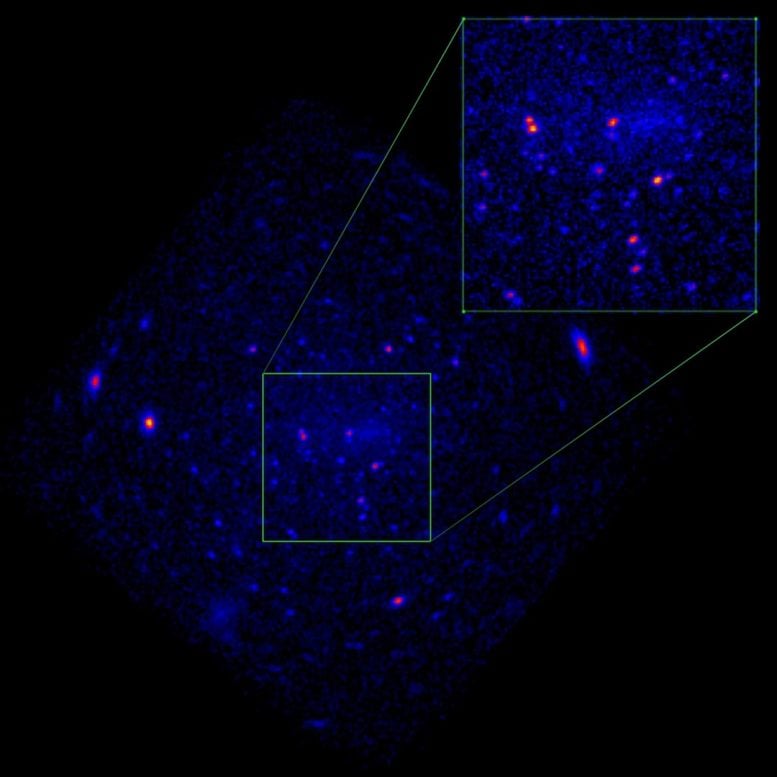
Omega Centauri is the largest cluster in the Milky Way, with a mass a million times that of our Sun. During Einstein Probe’s first months in space, observations of the well-known cluster helped to test and calibrate the satellite’s imaging quality.
Binary systems comprising a star with a black hole or neutron star companion generate X-rays when material from the star falls onto its heavy companion. Many such systems call Omega Centauri their home, making it shine brightly in X-ray light. Einstein Probe’s Follow-Up X-ray Telescope observed the structure and core region of the globular cluster. Credit: Chinese Academy of Sciences
Rapid Follow-Up Observations
Einstein Probe’s FXT instrument has a set of two X-ray telescopes for detailed studies of X-ray-emitting objects and events. During the past months, FXT has proved to be a trustworthy instrument to observe a range of X-ray sources. The first images bring into new focus a supernova remnant, an elliptical galaxy, a globular cluster, and a nebula.
Remarkably, FXT already performed a follow-up observation of an X-ray event spotted by WXT on 20 March 2024.
“It is astounding that even though the instruments were not yet fully calibrated, we could already perform a time-critical follow-up observation using the FXT instrument of a fast X-ray transient first spotted by WXT,” explains Dr. Erik Kuulkers, ESA’s Einstein Probe Project Scientist. “It shows what Einstein Probe will be capable of during its survey.”
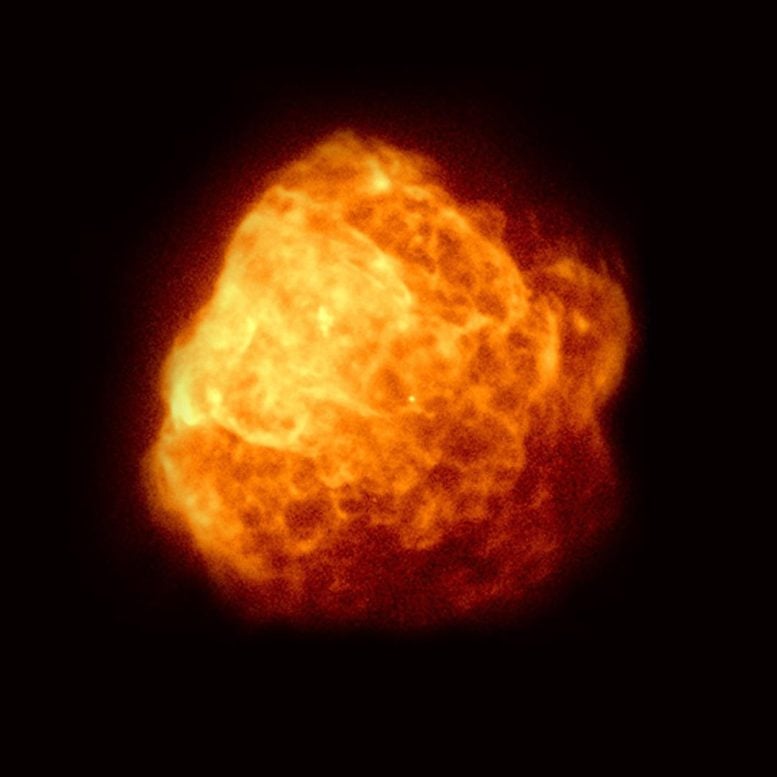
An image of Puppis A in X-ray light, taken as part of the test and calibration campaign of Einstein Probe. Puppis A is the remnant of a supernova explosion that occurred 4000 years ago, the bright dot in the center is the remnant star. The cloud-like structure surrounding it comes from hot material generated and expelled during the supernova. Einstein Probe’s Follow-up X-ray Telescope (FXT) took this image. Accompanying this image, FXT also delivered a spectrum of the source tracing the energy distribution of its light. This enables scientists to find out which are the elements present in this supernova remnant. Credit: Chinese Academy of Sciences
What’s Next?
In the coming months, Einstein Probe will continue to undergo in-orbit calibration activities before starting its routine science observations around mid-June. During the three-year mission, the satellite will circle Earth at a height of 600 km and keep its eyes on the sky searching for transitory X-ray events. Using the FXT follow-up telescope, the mission will look deeper at newly detected events and other known interesting objects.
Einstein Probe’s capabilities are highly complementary to the in-depth studies of individual cosmic sources enabled by XMM-Newton and XRISM. Its survey is fundamental to prepare for X-ray observations by ESA’s future NewAthena mission, currently under study and set to be the largest X-ray observatory ever built.
Einstein Probe is an international collaborative mission led by the Chinese Academy of Sciences (CAS) with the European Space Agency (ESA), the The Max-Planck-Institut für extraterrestrische Physik (MPE), Germany, and Centre National D’Etudes Spatiales (CNES), France. ESA and MPE contributed key components of FXT. ESA is participating in the Einstein Probe project as a mission of opportunity and has provided support for testing and calibrating the X-ray detectors and the optics of WXT. ESA’s ground stations will be used to help download the data, while CNES provides a VHF (very high frequency) ground receiving network for the real-time and fast downlink of scientific data. In return for its contributions, ESA will get access to 10% of the scientific data from Einstein Probe.